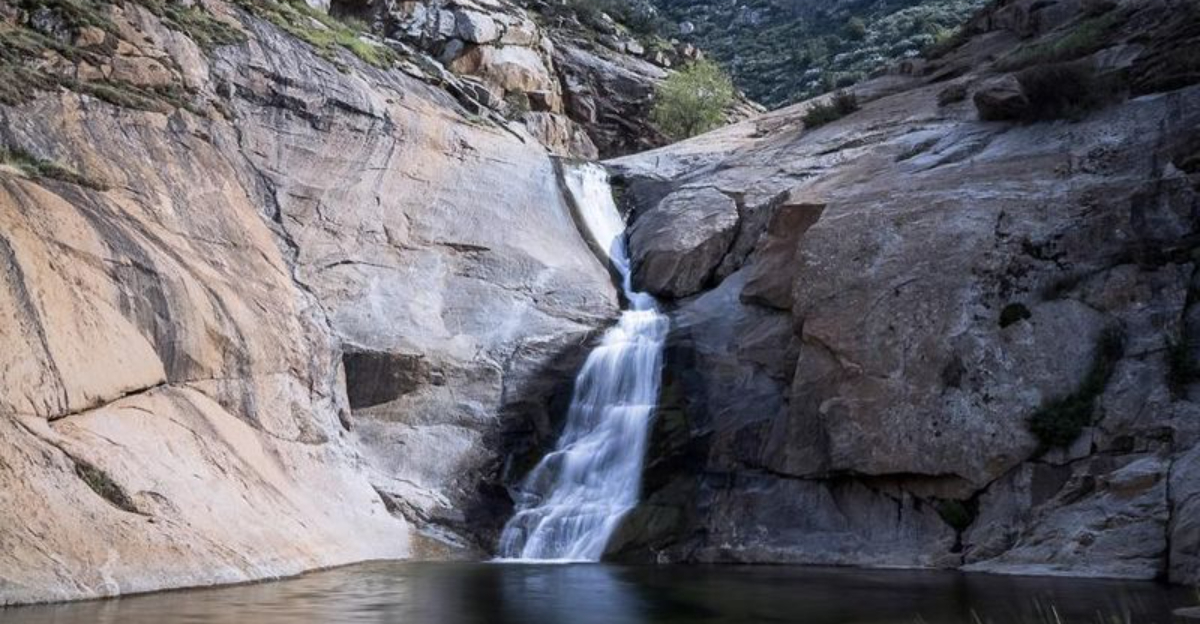23 Mysterious Corners Of The World Where Logic Takes A Vacation
Our planet hides places where the normal rules of nature seem to bend and break in ways that leave scientists scratching their heads.
Imagine waterfalls that bleed red, forests where trees grow sideways, or spots where gravity appears to work backward.
Join us as we explore 23 mind-bending locations that challenge everything we think we know about how the world works.
1. The Bermuda Triangle, Atlantic Ocean
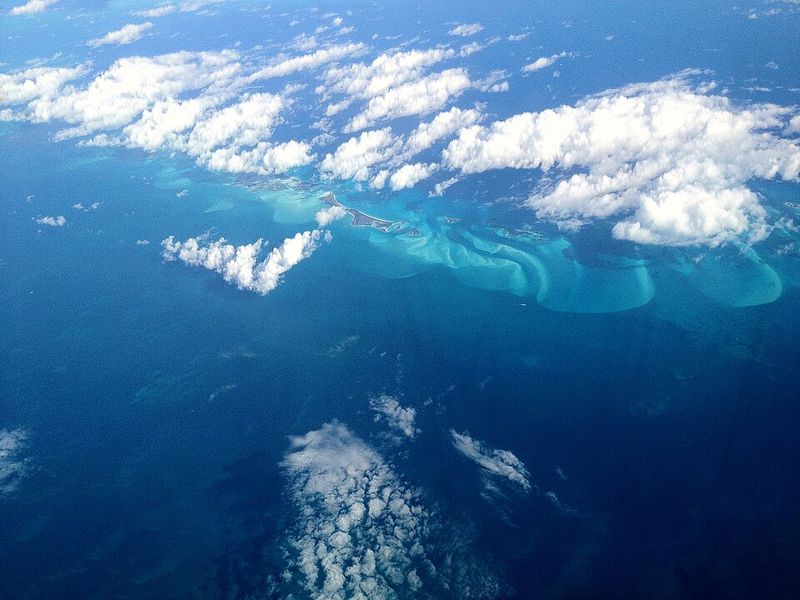
Sailors and pilots have whispered tales about this triangular patch of ocean for decades, where ships and planes vanish without a trace. Stretching between Miami, Bermuda, and Puerto Rico, this watery graveyard has claimed countless vessels since the 1940s.
Compass needles spin wildly here, and radio signals mysteriously fail. Some blame magnetic anomalies, while others point to methane gas bubbles rising from the seafloor that could sink ships in seconds.
2. Blood Falls, Antarctica
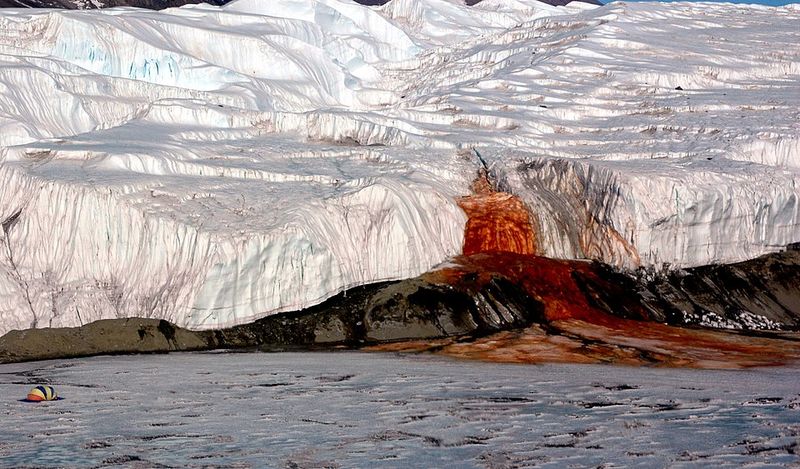
Picture a glacier weeping tears of blood, and you have got Antarctica’s most disturbing natural wonder. A five-story waterfall gushes crimson liquid from the Taylor Glacier, staining the pristine white ice like a horror movie scene.
Scientists discovered that iron-rich saltwater trapped beneath the glacier for millions of years oxidizes when exposed to air. Ancient microbes survive in complete darkness without oxygen, making this spot a window into alien-like life.
3. Lake Natron, Tanzania
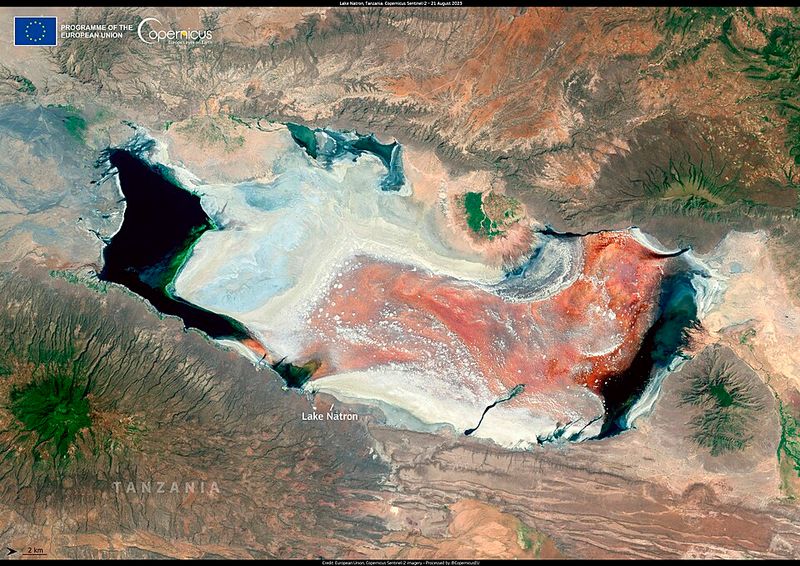
What looks like a beautiful pink mirror will turn any creature that touches it into a stone statue. With pH levels reaching 10.5 and temperatures hitting 140 degrees Fahrenheit, Lake Natron essentially mummifies animals on contact.
Birds that crash into its reflective surface become calcified sculptures within hours. Yet incredibly, millions of flamingos breed here because the harsh conditions keep predators away, creating a paradise built on danger.
4. Aokigahara Forest, Japan
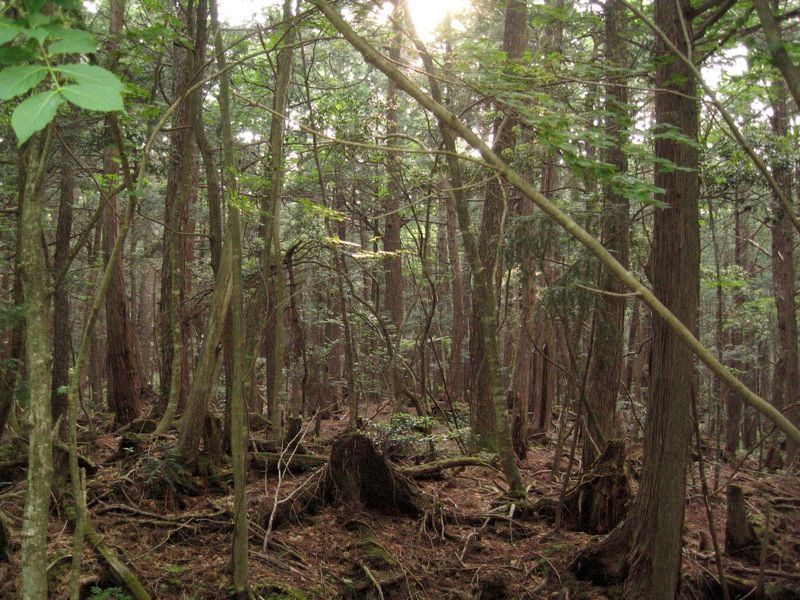
Compasses go haywire in this forest at Mount Fuji’s base, where magnetic iron deposits scramble navigation tools and silence wraps around you like a blanket. Twisted trees grow from volcanic rock in patterns that feel deliberately maze-like.
Known sadly as a destination for those seeking to disappear forever, the forest earned its haunting reputation honestly. Rangers patrol regularly, and signs encourage visitors to reconsider, while the dense canopy blocks wind and wildlife sounds completely.
5. The Nazca Lines, Peru
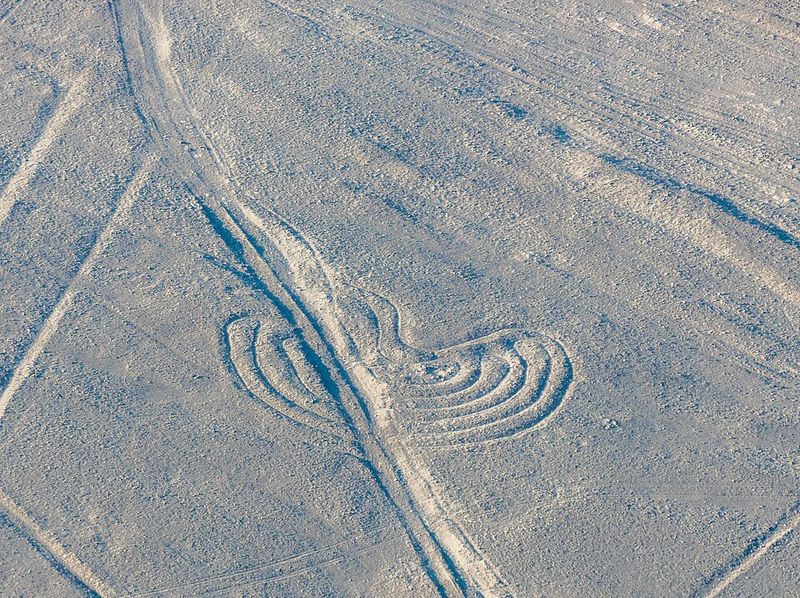
Somebody carved massive pictures into Peru’s desert floor over 2,000 years ago, creating artwork so huge you can only appreciate it from an airplane. Hummingbirds, spiders, and monkeys stretch hundreds of feet across, alongside perfectly straight lines running for miles.
Ancient people moved tons of rocks to expose lighter soil underneath, but why remains unclear. Without aerial technology, how did they plan such precise designs? Some suggest astronomical calendars, while others imagine wilder theories.
6. The Devil’s Kettle, Minnesota
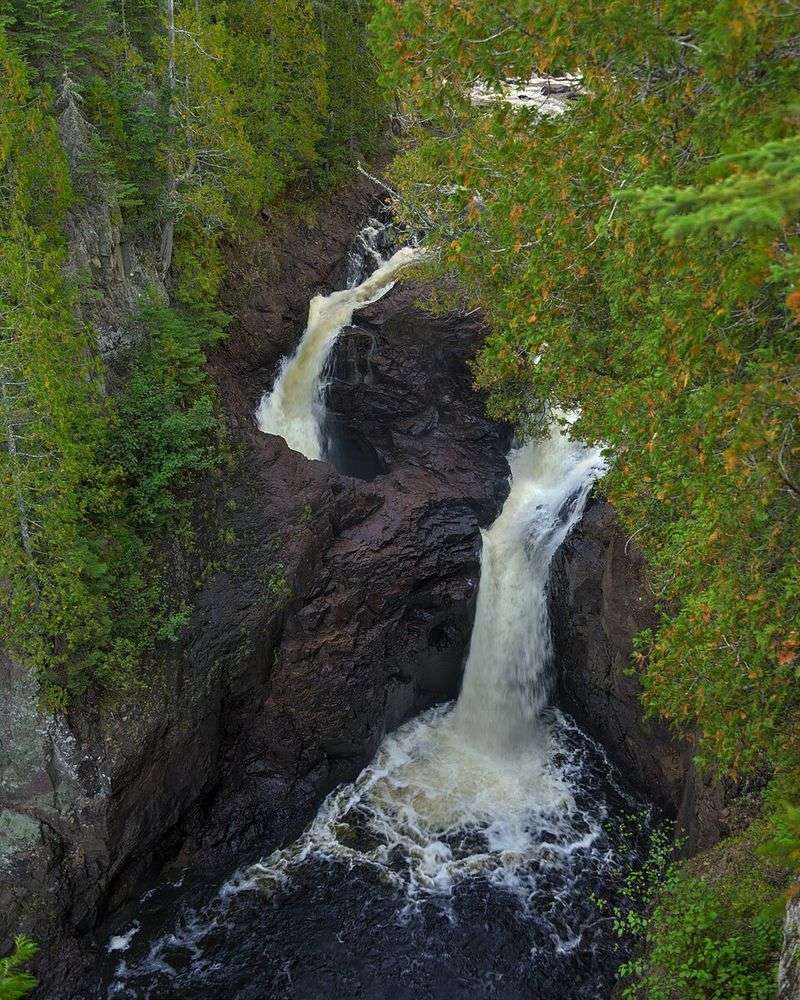
Half of the Brule River tumbles down normally while the other half drops into a hole and completely disappears. Scientists poured dye, ping pong balls, and tracking devices into the kettle, but nothing ever emerged downstream.
Where does thousands of gallons per minute go? Recent research suggests the water rejoins the river through underwater channels, but the mystery captivated visitors for generations. Nature loves keeping secrets in plain sight.
7. The Door To Hell, Turkmenistan
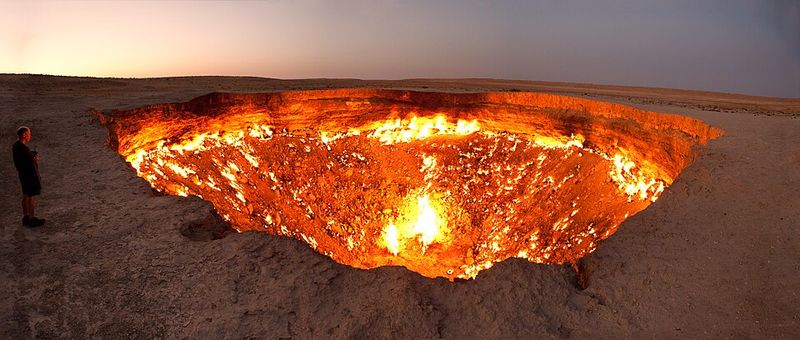
A fiery crater has burned continuously in Turkmenistan’s desert since 1971, earning the nickname that perfectly captures its apocalyptic appearance. Soviet engineers accidentally created this inferno when their drilling rig collapsed into a natural gas cavern.
Fearing poisonous gas release, they lit the cavity on fire expecting it to burn out within weeks. Five decades later, flames still rage across the 230-foot-wide pit, consuming seemingly endless underground gas reserves and creating a tourist attraction from a massive mistake.
8. Magnetic Hill, India
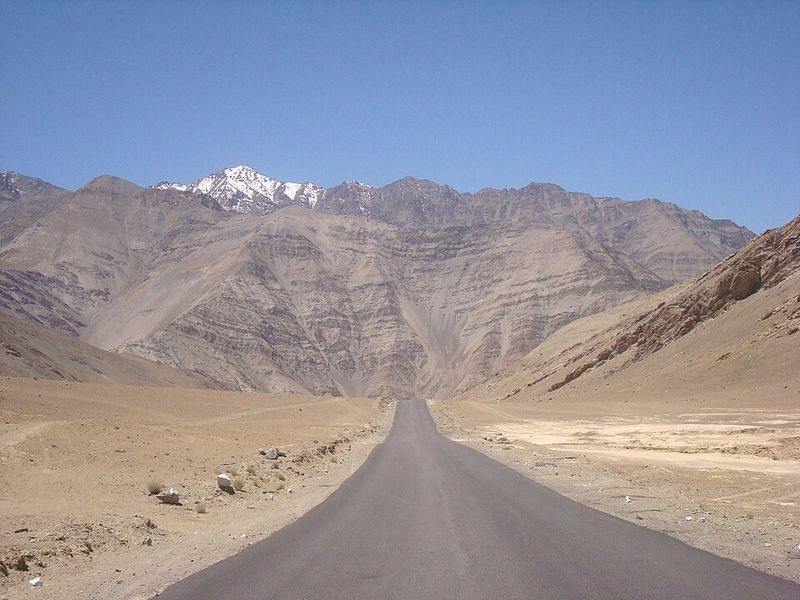
Park your car on this Ladakh road, release the brake, and watch it roll uphill by itself at speeds up to 12 miles per hour. Pilots flying overhead must increase altitude because the magnetic force is supposedly strong enough to pull aircraft down.
Actually, the surrounding landscape creates a brilliant optical illusion making a downhill slope appear to go upward. Your brain gets fooled by the horizon line, proving our senses cannot always be trusted.
9. Crooked Forest, Poland
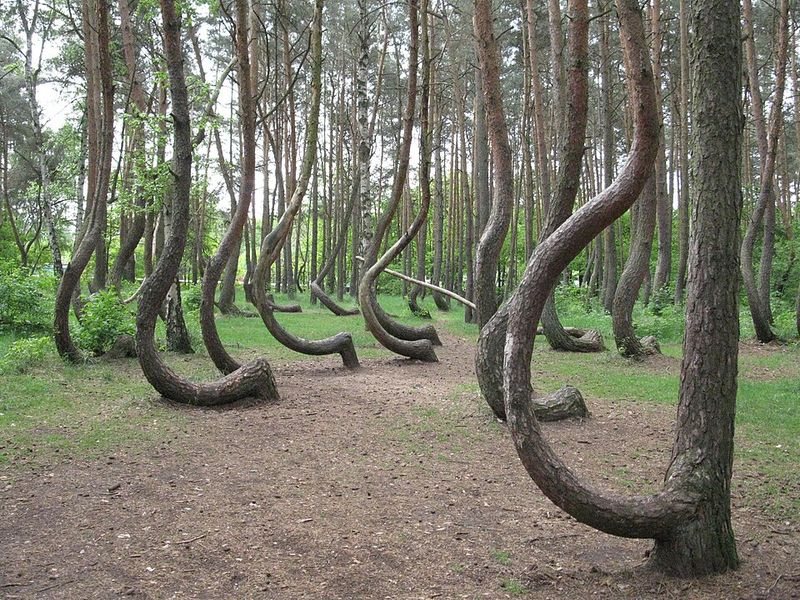
Around 400 pine trees grow with bizarre 90-degree bends at their bases, all curving northward like synchronized dancers frozen mid-bow. Planted in the 1930s, something caused every tree to develop identical J-shaped trunks before growing straight upward.
Human intervention seems likely, perhaps farmers manipulating saplings for curved timber or furniture-making, but World War II interrupted and the technique died with its practitioners. Nature reclaimed the forest, leaving behind this puzzling monument to lost knowledge.
10. Marfa Lights, Texas
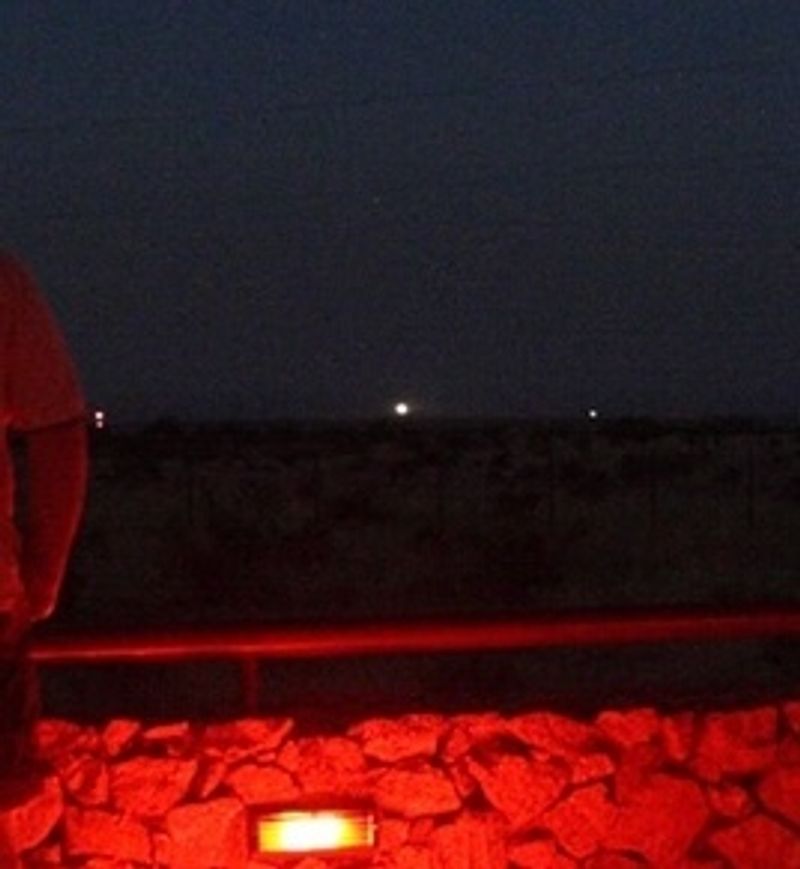
Glowing spheres appear randomly in the West Texas desert, bobbing and weaving across the horizon like playful ghosts that refuse to be caught or explained. Witnessed since the 1880s, the lights split, merge, change colors, and vanish unpredictably.
Skeptics blame car headlights or atmospheric reflections, but sightings predate automobiles by decades. A dedicated viewing platform lets visitors hunt for the lights, though appearances remain frustratingly random and cameras often fail to capture what eyes clearly see.
11. The Zone Of Silence, Mexico
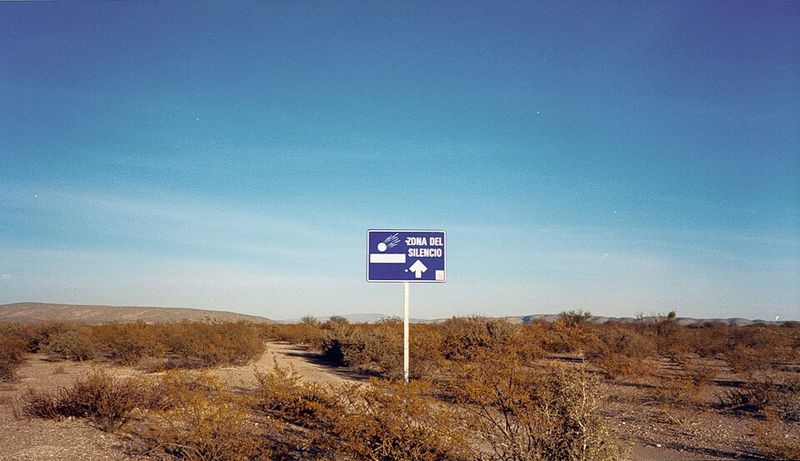
Radio signals die completely in this patch of Chihuahuan Desert, where compasses spin uselessly and TV broadcasts vanish into static. Located on the same latitude as the Bermuda Triangle, this zone earned its name from frustrated researchers unable to communicate.
Meteorites fall here with suspicious frequency, and strange plant mutations grow nowhere else on Earth. A 1970 U.S. military missile went off course and crashed here, prompting scientific interest that continues today despite few solid answers emerging.
12. Sailing Stones, Death Valley
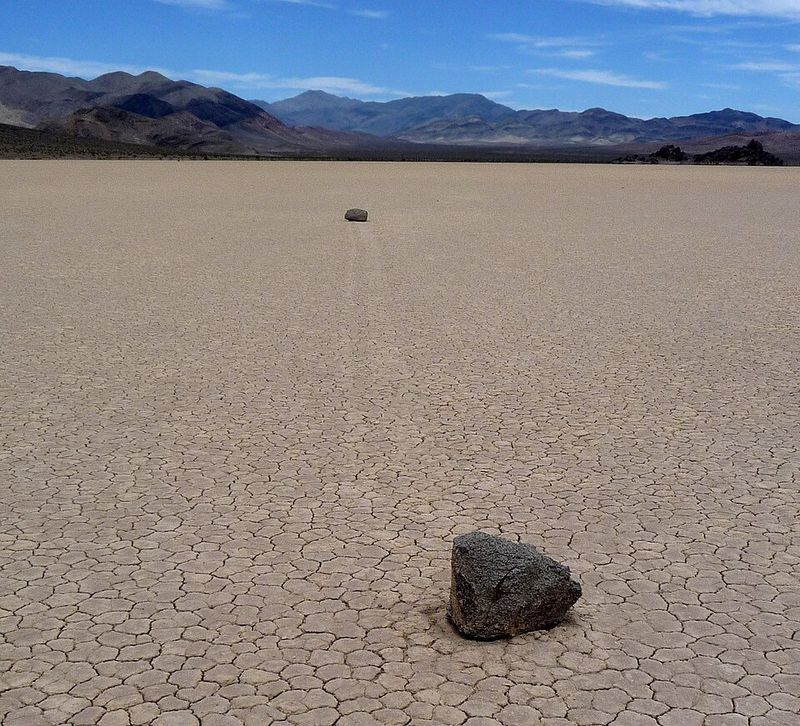
Boulders weighing hundreds of pounds slide across Death Valley’s dry lakebed, leaving long trails in the cracked mud but never getting caught in the act. Nobody witnessed the movement for decades, fueling wild speculation about magnetic forces or alien intervention.
Time-lapse photography finally revealed the truth: thin ice sheets form overnight, and morning winds push the ice, dragging rocks along slowly. Mystery solved, yet watching stones carve paths across the desert still feels magical.
13. Eternal Flame Falls, New York
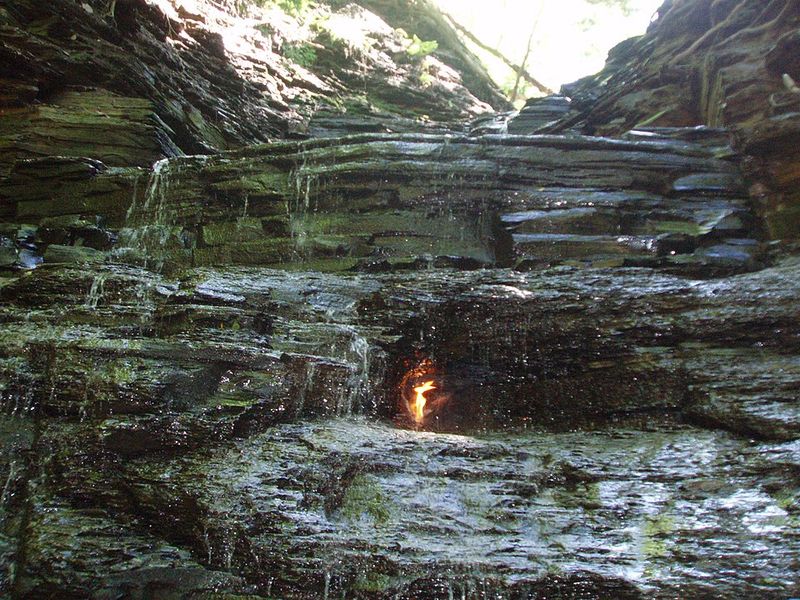
Water cascades over a flame that burns continuously behind the falls, creating an impossible marriage of opposing elements. Natural gas seeping through cracks in the rock feeds the fire, which hikers can relight if it goes out.
Geologists study why gas concentrations here remain high enough to sustain combustion. The flame flickers hypnotically behind its watery curtain, proving nature loves dramatic contradictions. Visiting requires a short hike through Chestnut Ridge Park, where fire and water coexist peacefully.
14. Spotted Lake, Canada
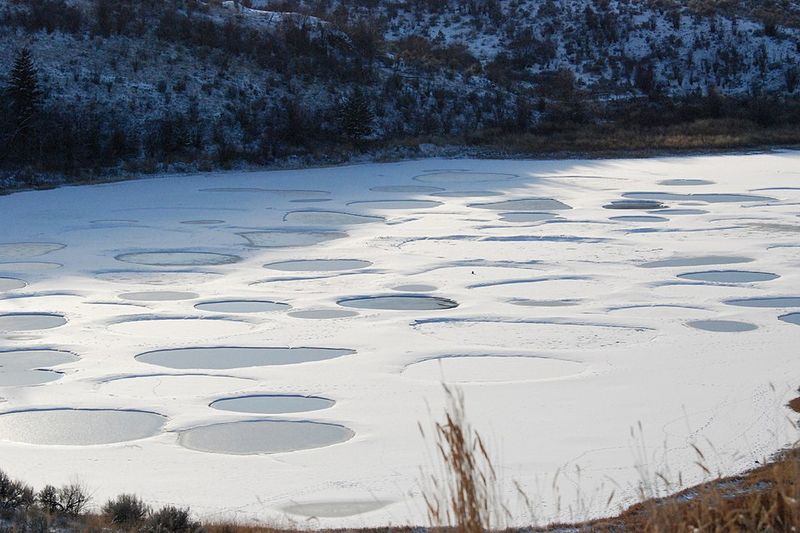
Summer heat transforms this British Columbia lake into a polka-dotted wonder, with mineral deposits forming distinct circles in yellow, green, and blue. Sacred to indigenous peoples for centuries, the water contains concentrated minerals including magnesium sulfate and calcium.
As water evaporates, minerals crystallize into separate pools, each with unique coloration. Walking on the hardened deposits feels like stepping across alien terrain. During World War I, minerals were actually harvested here for ammunition manufacturing, adding historical intrigue to natural beauty.
15. Moeraki Boulders, New Zealand
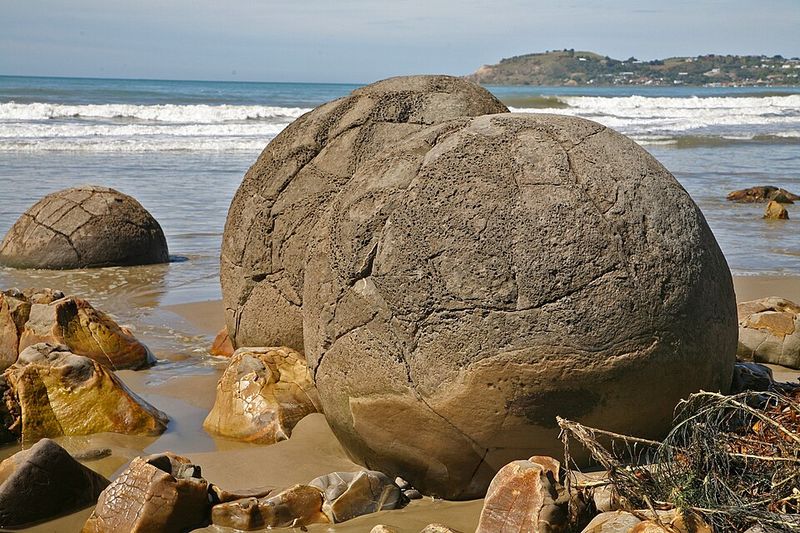
Giant stone spheres litter a New Zealand beach like marbles dropped by ancient giants, some weighing several tons and measuring over six feet across. Maori legends claim they are remains of eel baskets washed ashore from a legendary canoe wreck.
Science offers a less romantic explanation: calcite crystallized around organic matter on the ocean floor millions of years ago, forming concretions. Erosion eventually freed them from coastal cliffs, revealing their near-perfect spherical shapes to astounded beachgoers and geologists alike.
16. Fly Geyser, Nevada
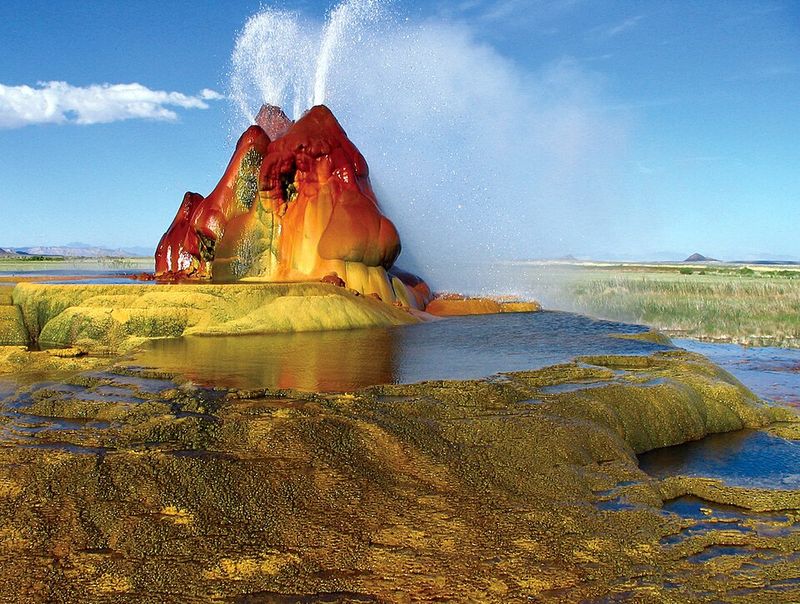
Rainbow-colored terraces spray water continuously from a geyser that humans accidentally created in 1964 during well drilling. Geothermal water dissolved minerals paint the mounds in brilliant reds, greens, and yellows, creating a psychedelic sculpture in the Nevada desert.
Located on private property, the geyser remained relatively unknown until recent years. Algae thriving in the hot water add to the surreal coloration. What started as a drilling mistake became an unintentional work of art, proving accidents sometimes create beauty.
17. Chocolate Hills, Philippines
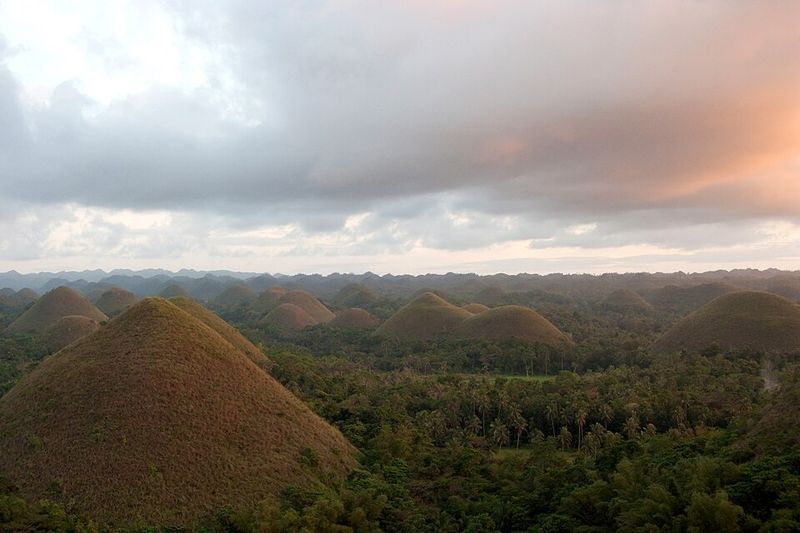
Over 1,200 nearly identical cone-shaped hills blanket the Philippine landscape, turning chocolate brown in the dry season and giving this geological oddity its delicious name. Each mound rises 100 to 160 feet tall with remarkable uniformity.
Legends say a giant wept tears that hardened into hills, but limestone weathering offers the scientific explanation. Underground water and erosion carved these symmetrical formations over millions of years. Climbing the viewing deck reveals an alien landscape that seems too perfect to be natural.
18. Salar de Uyuni, Bolivia
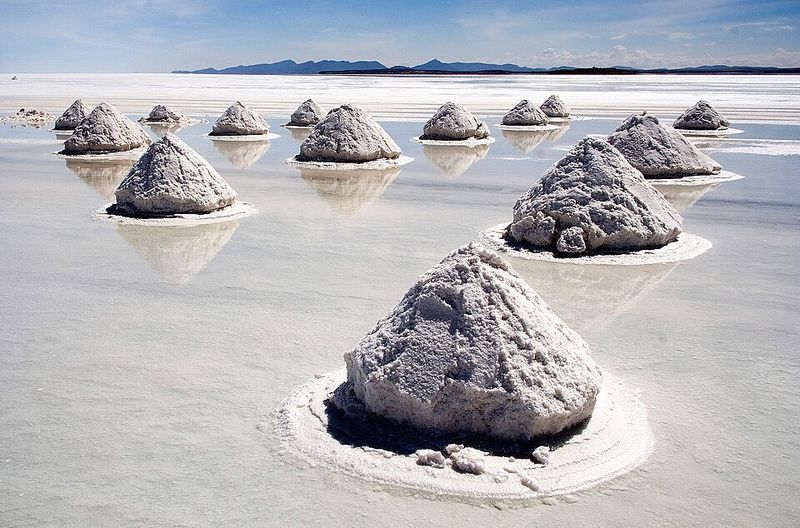
When rain covers the world’s largest salt flat, Bolivia transforms into the planet’s biggest mirror, reflecting sky and clouds so perfectly that horizon lines disappear completely. Covering over 4,000 square miles, this ancient lakebed holds roughly ten billion tons of salt.
Photographers flock here for mind-bending perspective shots where people appear to walk on clouds. The flats also contain half the world’s lithium reserves, making this stunning landscape economically valuable beyond its visual magic and tourist appeal.
19. Richat Structure, Mauritania
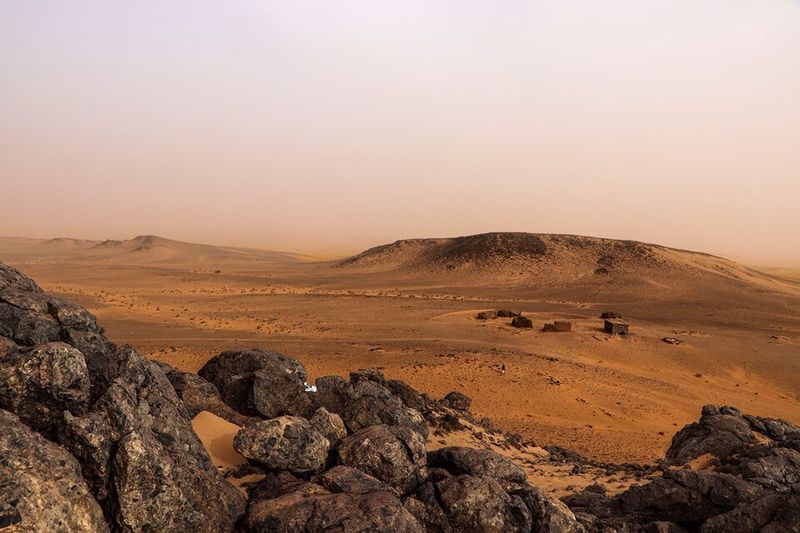
Astronauts use this 25-mile-wide bullseye in the Sahara as a landmark, with concentric circles so perfect they sparked theories about ancient civilizations or meteor impacts. Visible from space, the formation resembles a giant eye staring skyward.
Geologists now believe erosion exposed different rock layers that weathered at varying rates, creating the ringed appearance. Some still whisper about Atlantis connections, though science favors the erosion explanation. Either way, standing at the center feels like occupying the pupil of Earth’s eye.
20. Giant’s Causeway, Northern Ireland
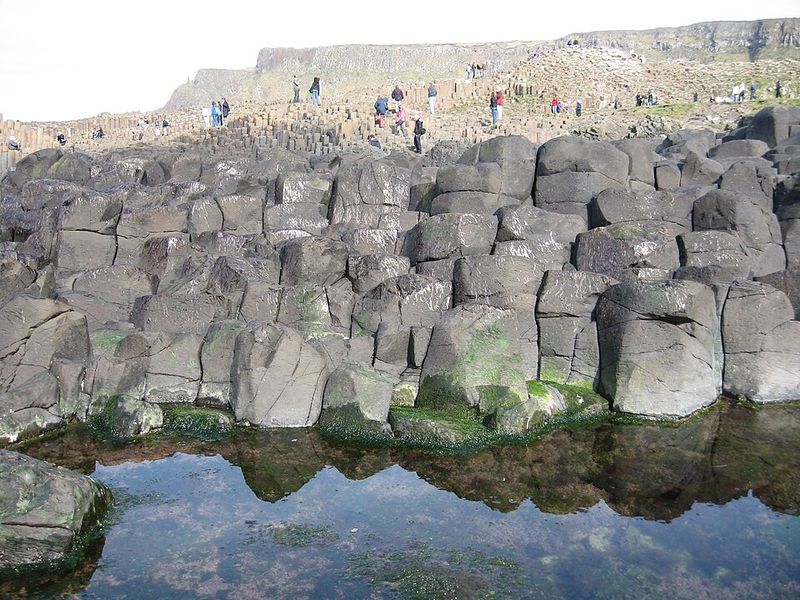
About 40,000 interlocking basalt columns form geometric stepping stones leading into the sea, looking so deliberately constructed that legend credits a giant building a bridge to Scotland. Most columns are hexagonal, fitting together like nature’s jigsaw puzzle.
Volcanic eruptions 60 million years ago created this wonder when lava cooled and contracted, fracturing into polygonal shapes. The precision seems impossible for natural processes, yet chemistry and physics crafted this masterpiece without blueprints or planning.
21. Antelope Canyon, Arizona
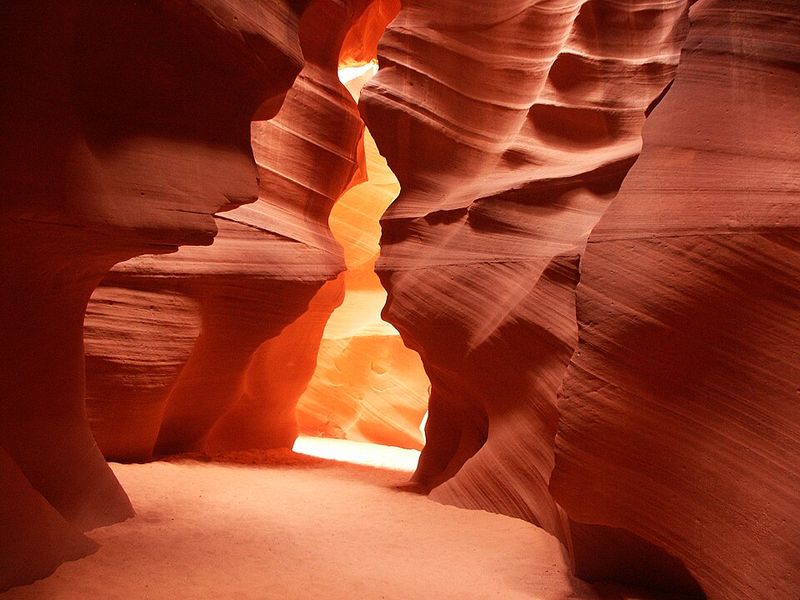
Flash floods carved flowing, wave-like patterns into sandstone over millions of years, creating narrow passages where light beams pierce through openings above like divine spotlights. The canyon walls seem to ripple and flow despite being solid rock.
Navajo guides lead tours through the slot canyon, which remains sacred to indigenous peoples. Photography enthusiasts wait for perfect light angles that make the orange and red walls glow supernaturally. Summer monsoons still shape the canyon, reminding visitors that beauty and danger coexist.
22. Morning Glory Pool, Yellowstone
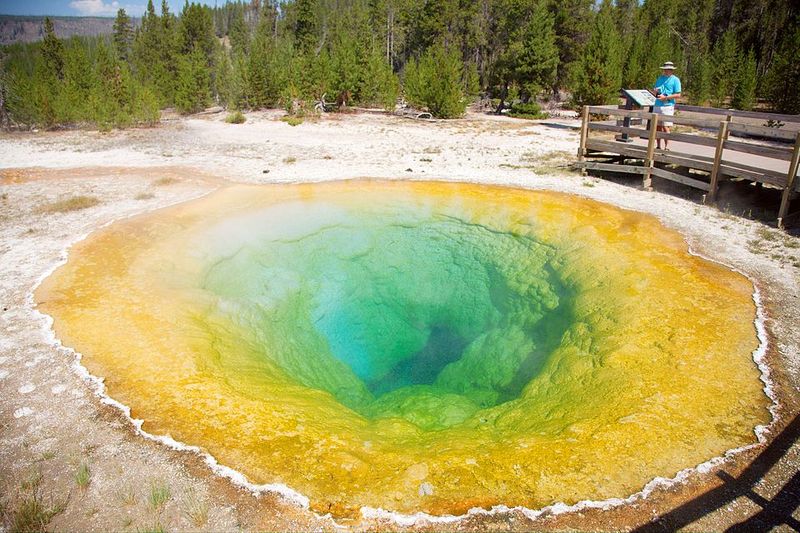
What started as a pristine blue hot spring now displays a rainbow of colors thanks to tourists throwing coins and trash into it for decades. Debris blocked underground vents, cooling the water and allowing different bacteria to thrive at various temperatures.
Each colored ring represents a different heat-loving microorganism, painting the pool in yellows, oranges, and greens surrounding the deep blue center. Park rangers now discourage vandalism, but the damage created accidental beauty while serving as a cautionary tale about human impact.
23. Wave Rock, Australia
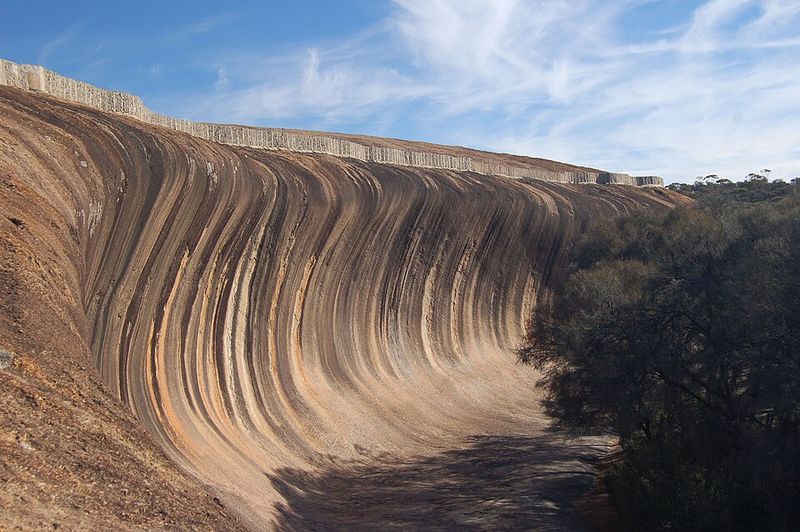
A 50-foot-tall granite cliff curves like a frozen tsunami about to crash, complete with vertical color streaks that mimic water’s flow. Located in Western Australia, this formation took 2.7 billion years to shape through weathering and erosion.
Aboriginal people knew about the wave for thousands of years before European settlers documented it. Walking beneath the overhang feels like standing under a suspended wall of water. Chemical runoff created the colorful vertical stripes, adding to the illusion of a stone ocean.






